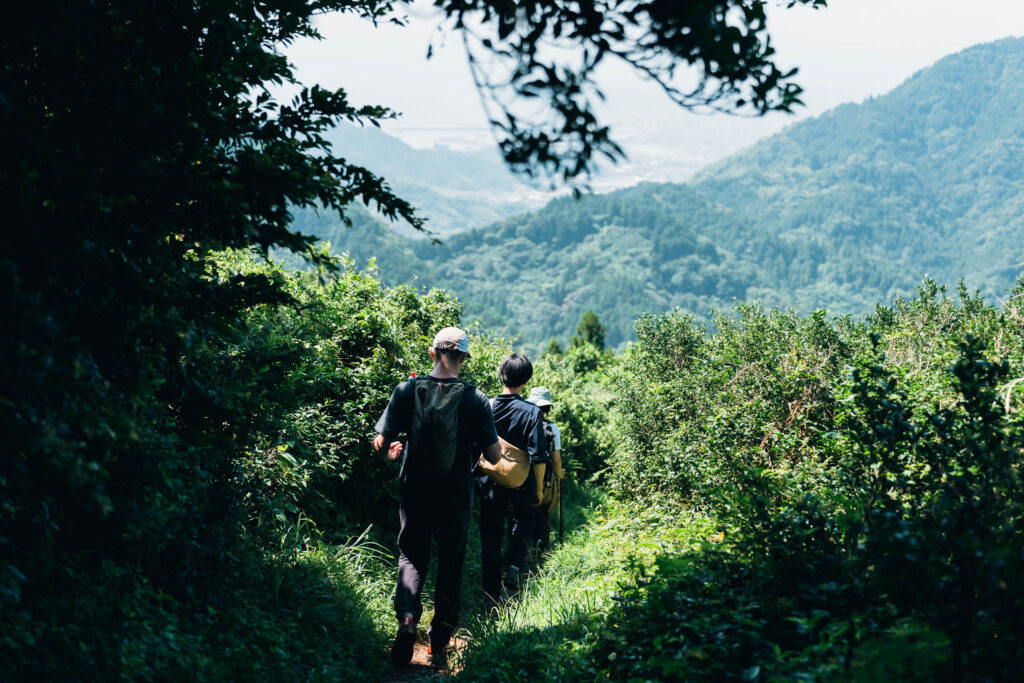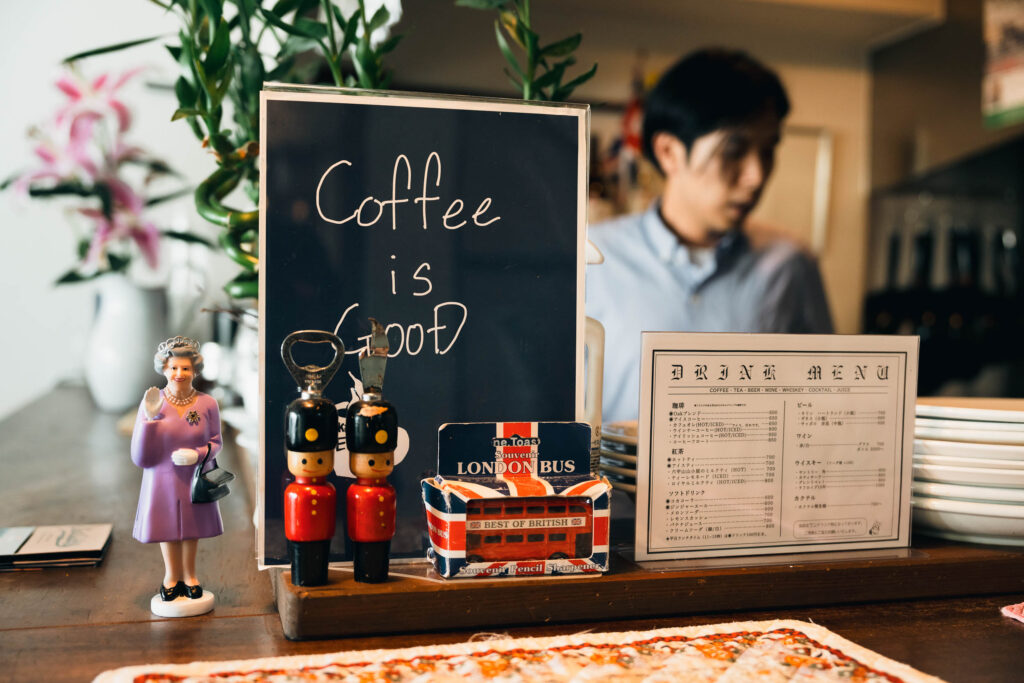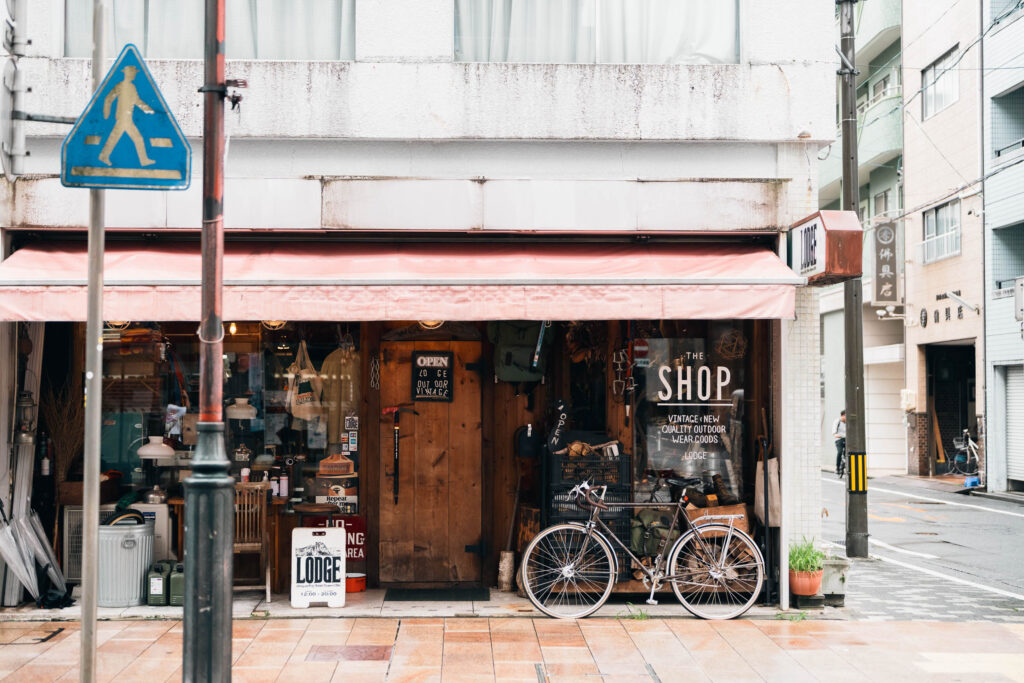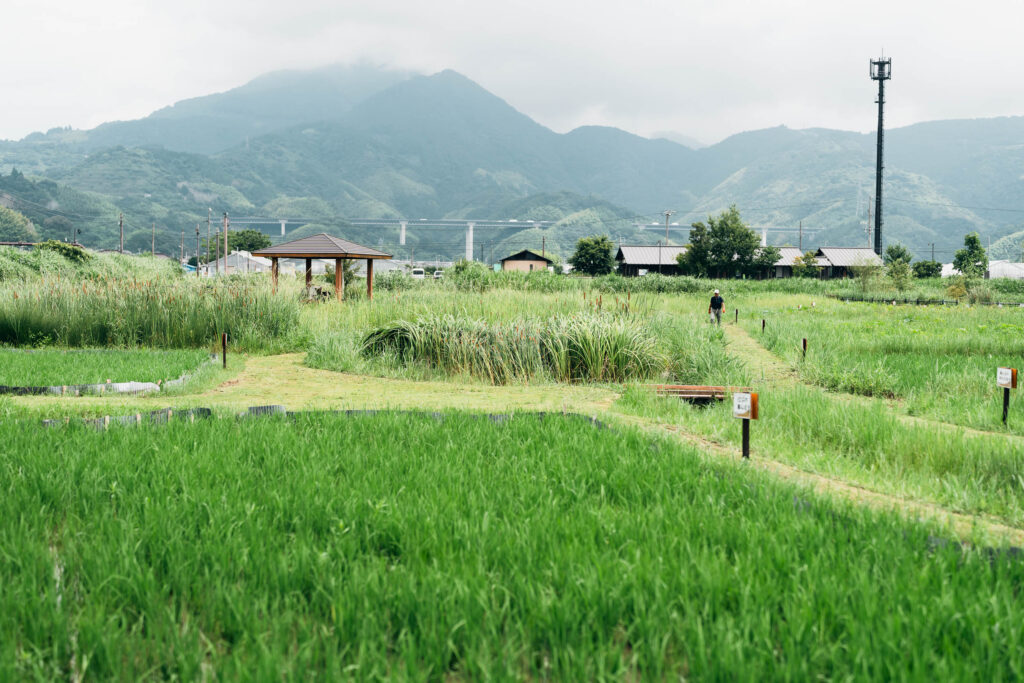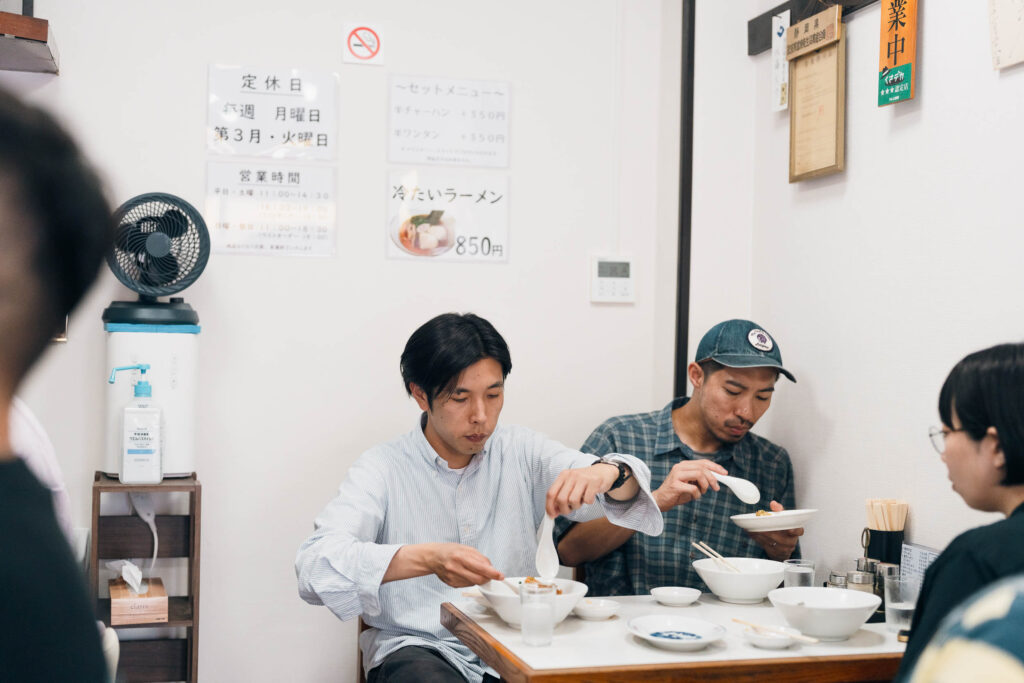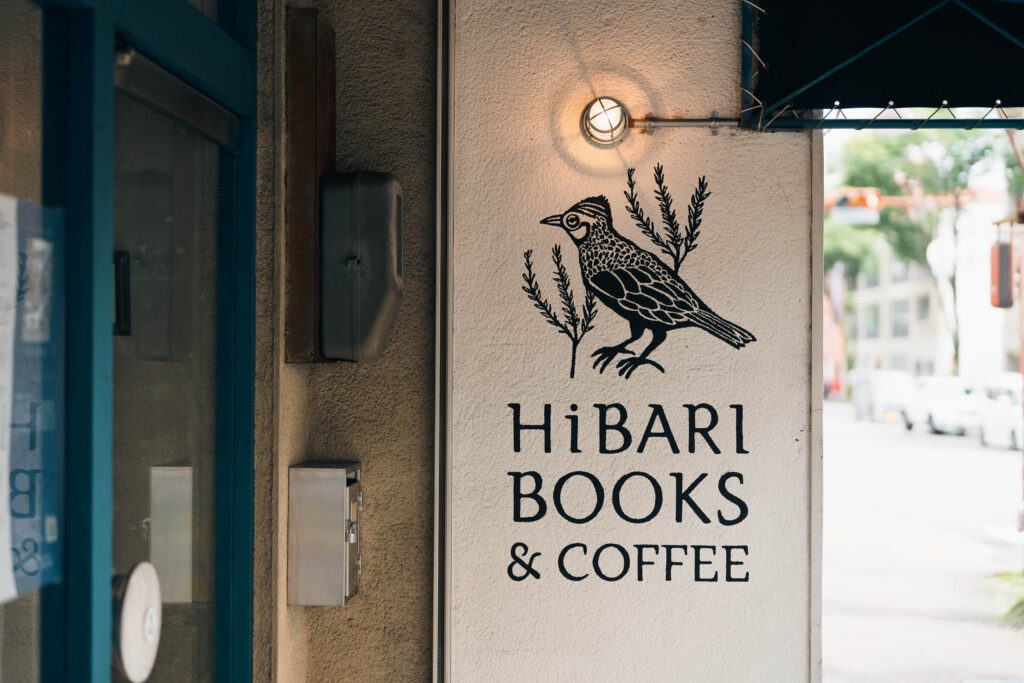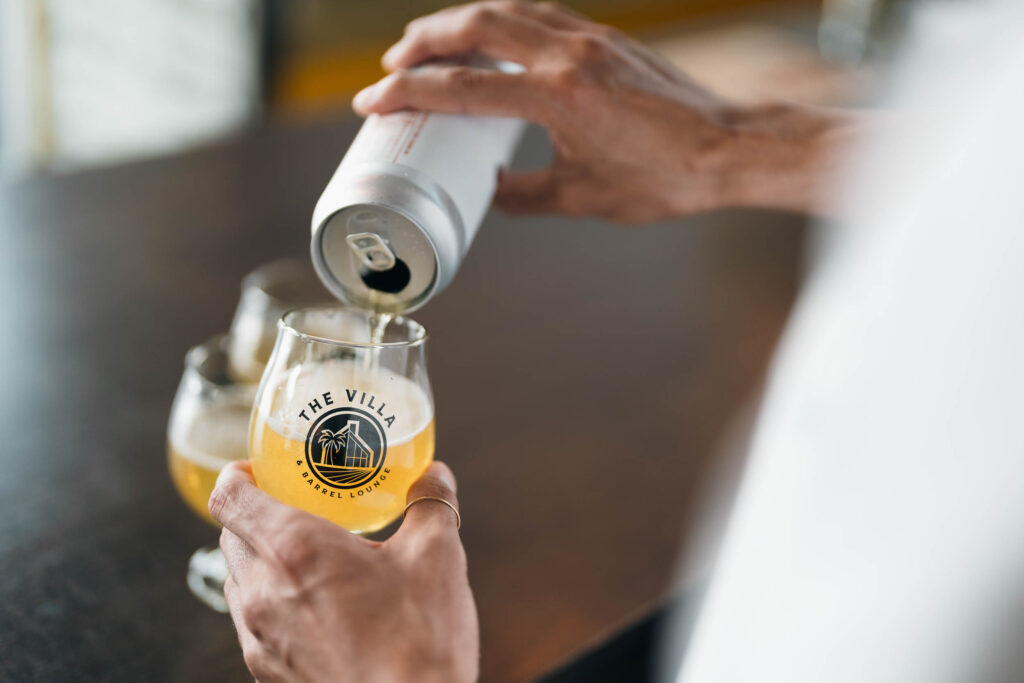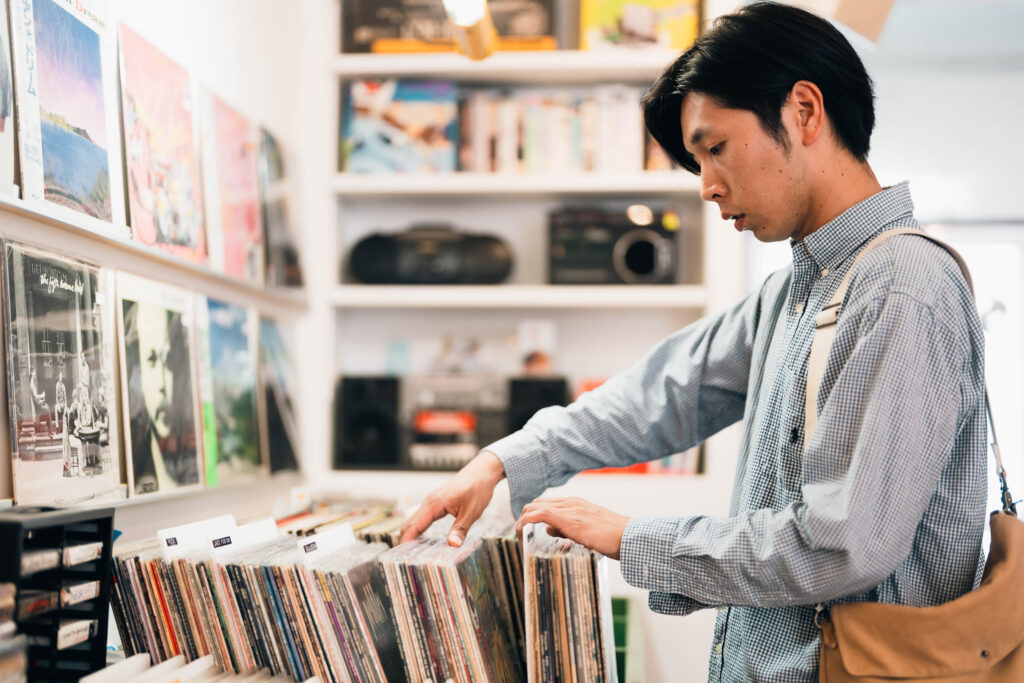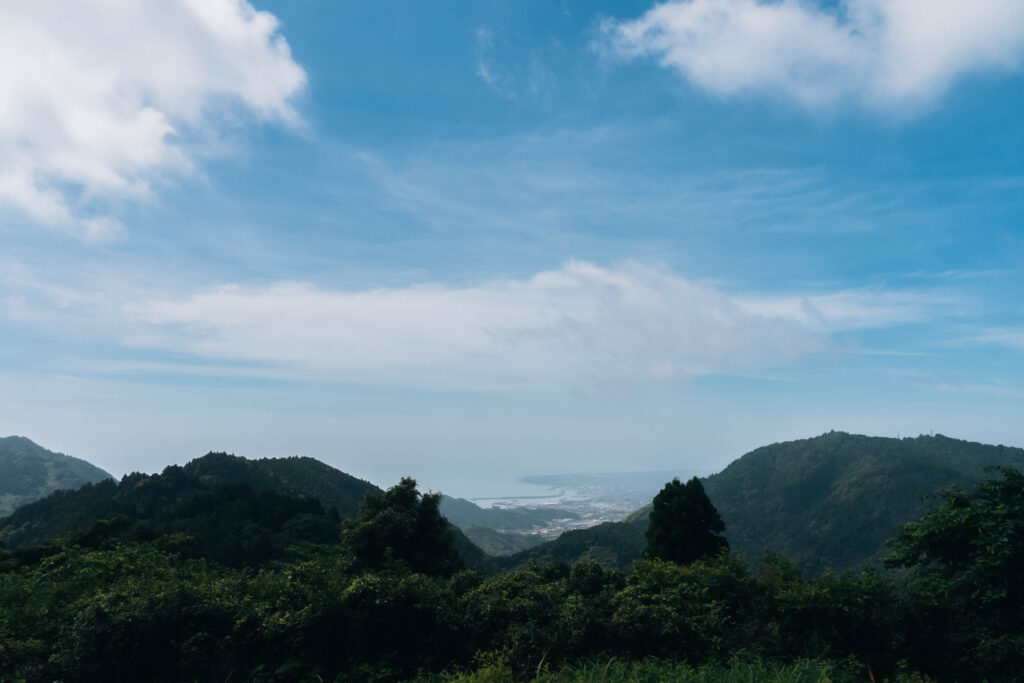
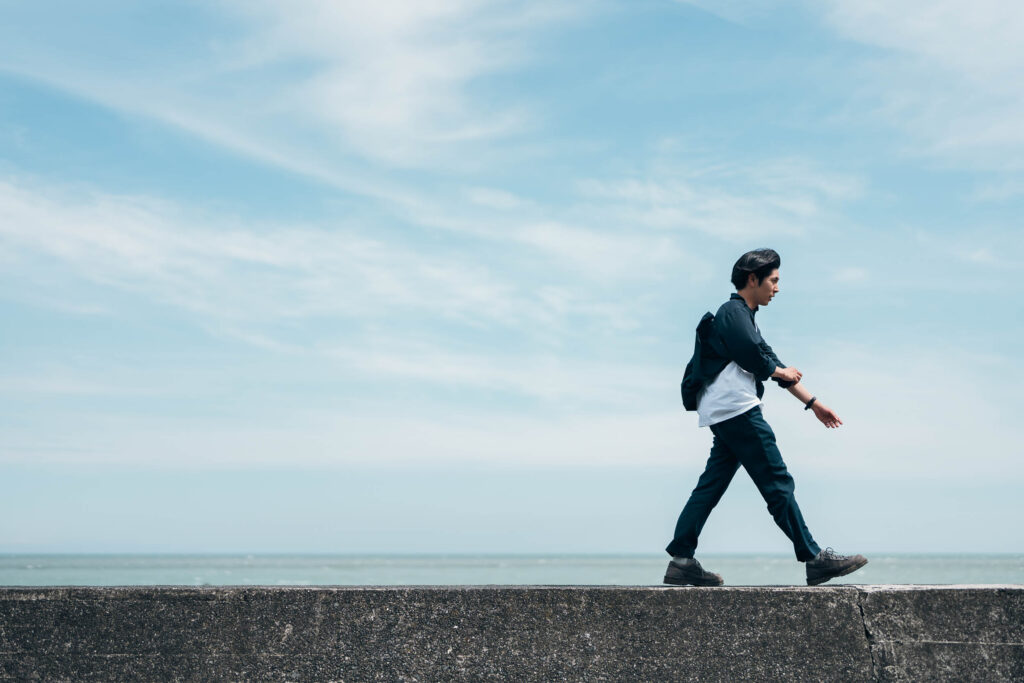
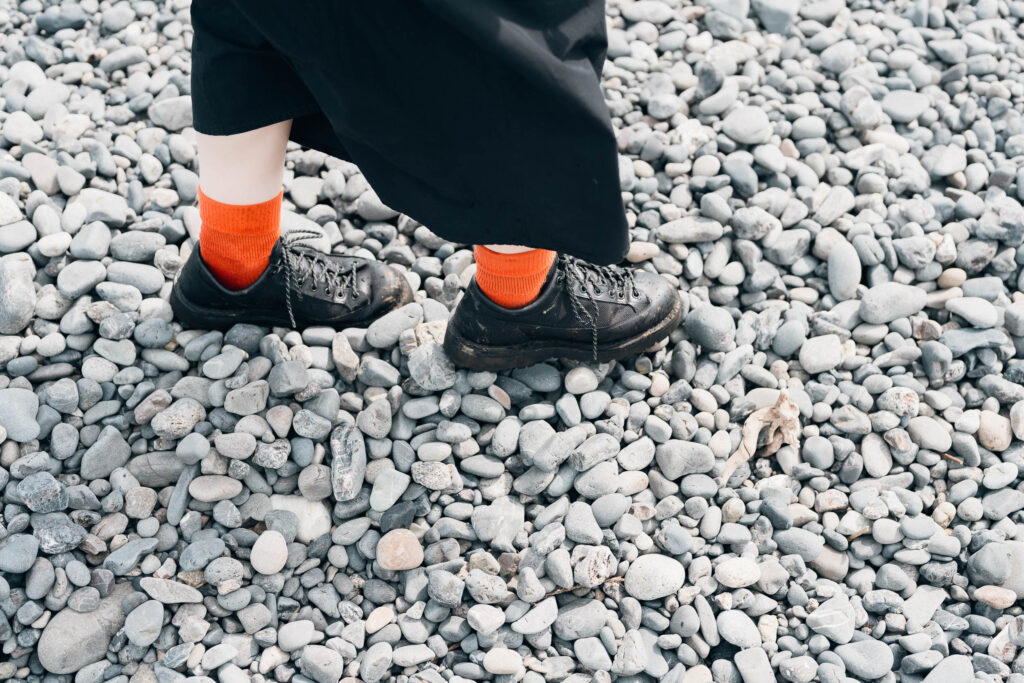
Facing Suruga Bay, Shizuoka City offers views of some of Japan’s most scenic spots, such as the Miho Pine Forest and Nihondaira, from which Mount Fuji can be admired. Although a government-designated city home to more than 500,000 souls, the sea, rivers, and mountains are only a 20-minute drive from the city. The area is also characterized by many historical buildings such as the ruins of Sunpu Castle and Kunouzan Toshogu Shrine, where Tokugawa Ieyasu spent one-third of his life.
“There is nature as an extension of our lives, a large hospital, commercial facilities, and the Shinkansen stops here. This is a city offering everything you need.” We often heard such comments from locals during the trip, and it is safe to say that Shizuoka is truly a city where nature and urban functions are in harmony.
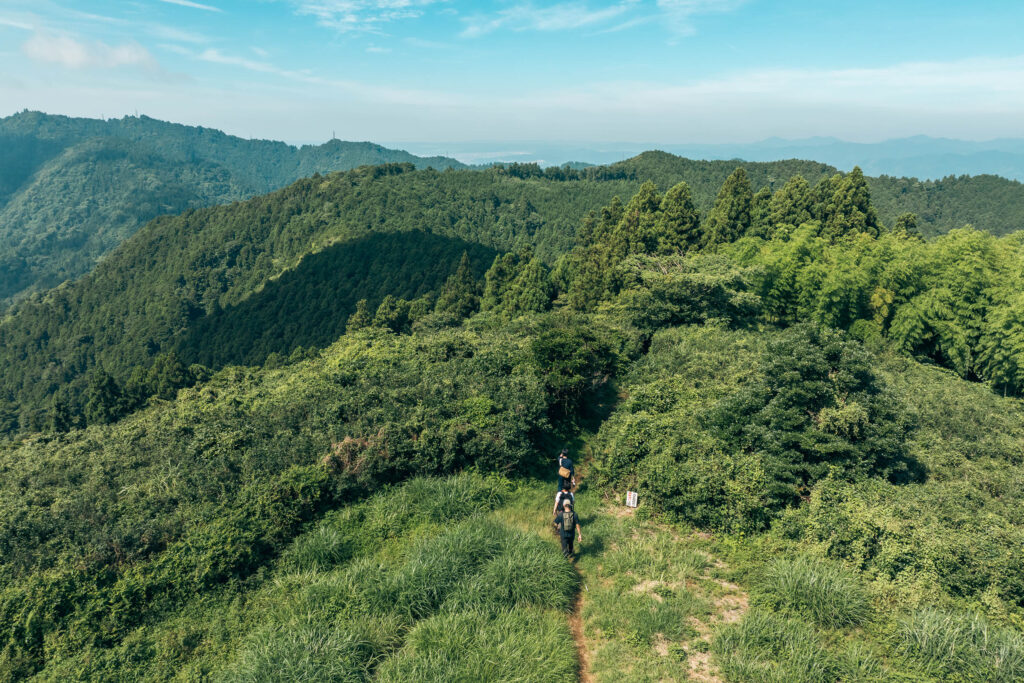

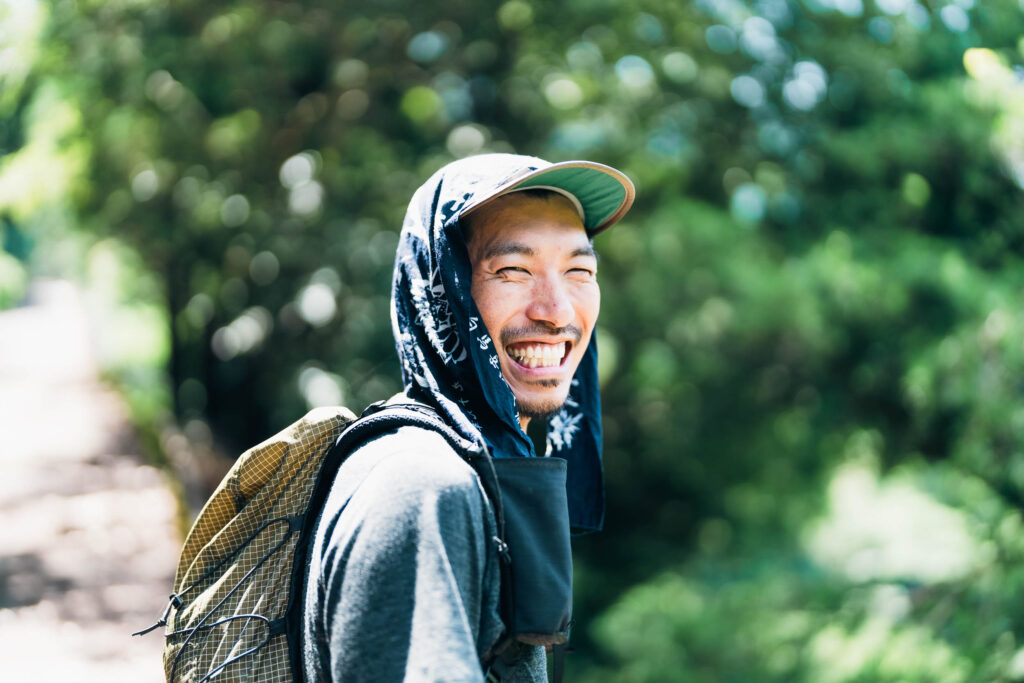
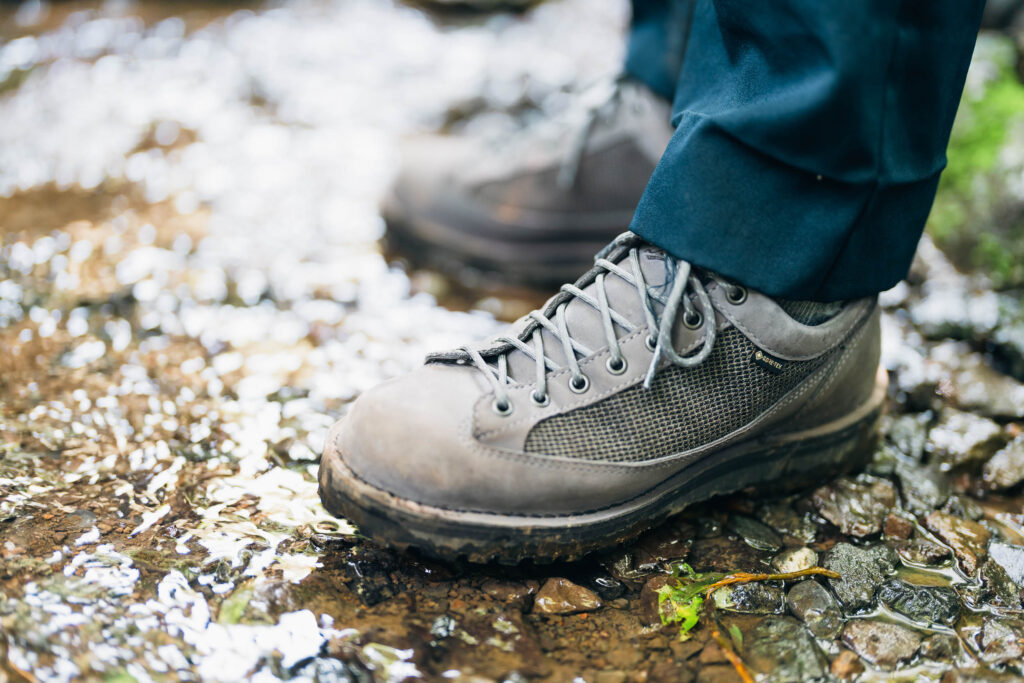
Coincidence or necessity? A row of unique stores in the shape of a doughnut
Mitchy, owner of the coffee shop “EBONY”, Shogo Tsukiji, owner of the outdoor used store “LODGE”, and illustrator UMI. A common thread of the three guides on this trip is that the hubs of their respective activities are located some distance from downtown. If Shizuoka Station were the center of the city, they would almost be outside walking distance. While there are no strict boundaries demarcating the city and its outskirts, “EBONY,” “LODGE,” the bookstore “Hibari Books” where Umi works, and the many unique stores introduced here are all located in a doughnut-shaped area away from the city center, whether by coincidence or by necessity.
Mitchy and Shogo explained that they do not consider it ideal to set up a store in front of a train station, despite the high footfall, but rather feel that it is even an advantage to have a small store and to be a little far from the station.
As Mitchy explained: “EBONY is located on the second floor of a small building near Sunpu Castle Park on the outskirts of the city, so it’s hardly somewhere you’d stumble across while walking around town. Many of our customers come all the way here after hearing about us somehow, so I feel very at ease serving them.”
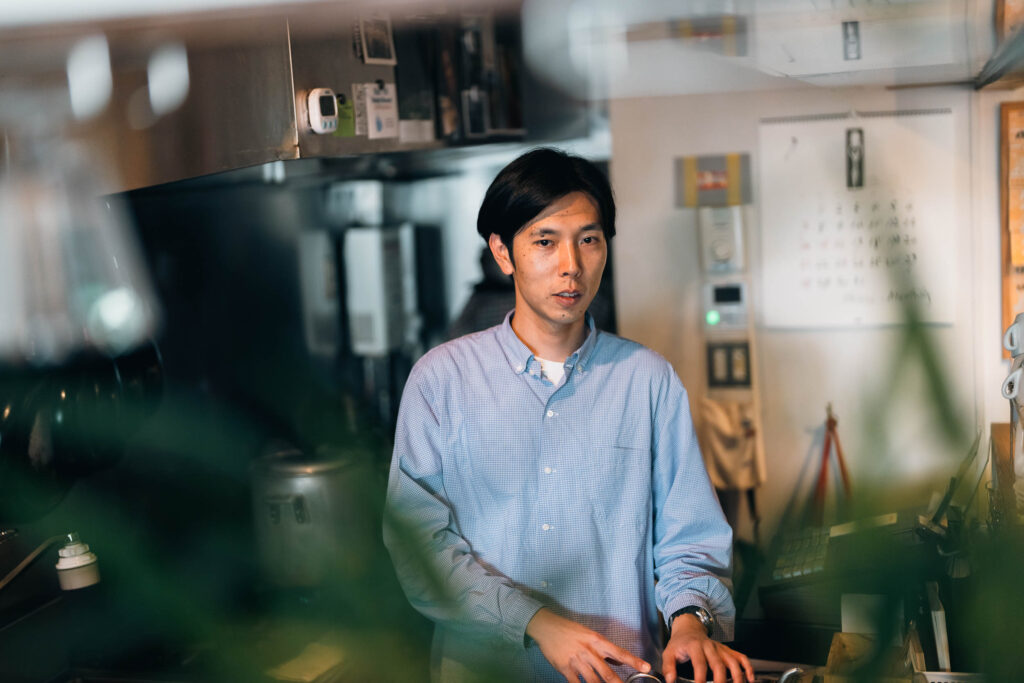
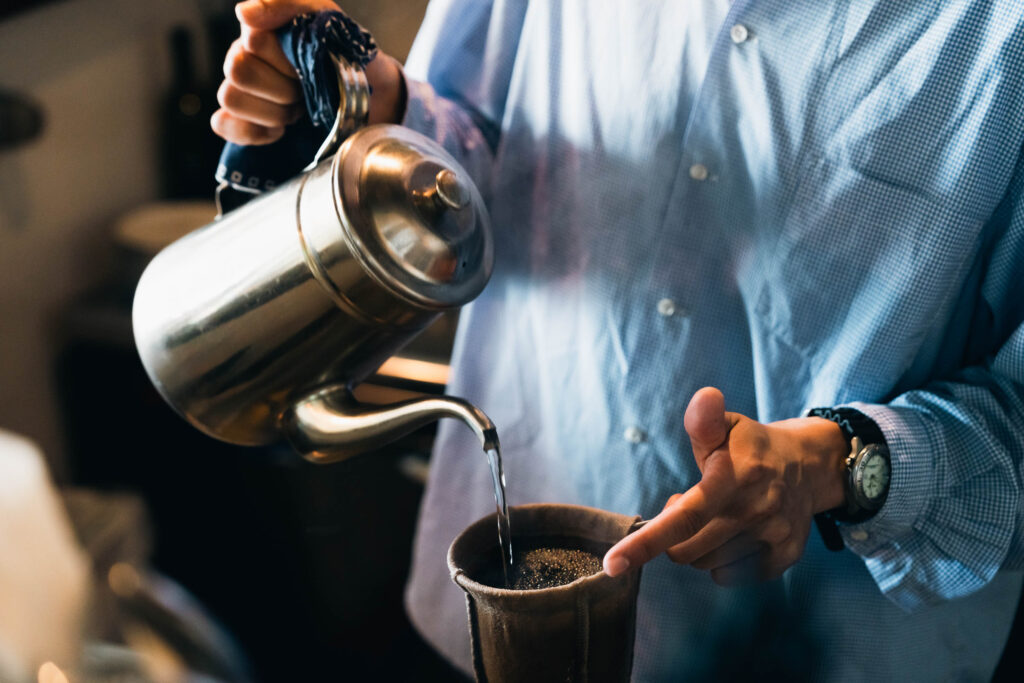
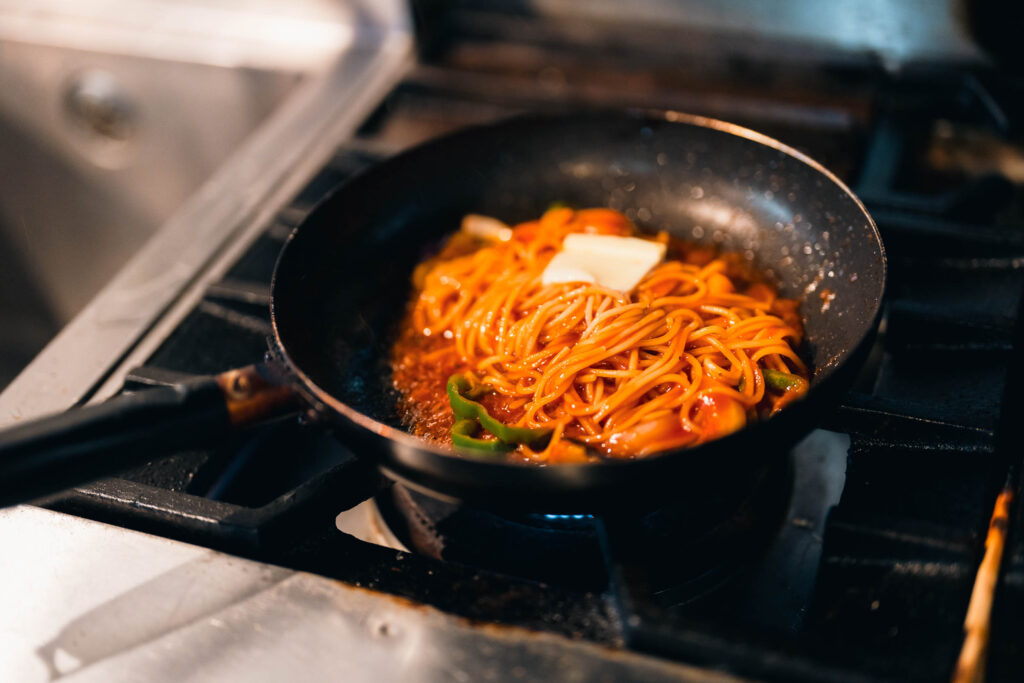
It is a commonly known anecdote that some of the fixtures of the coffee shop “EBONY” were inherited from “OAK,” a local coffee haunt that operated for 28 years.
Mamoru Uno was the proprietor of “OAK,” the storied coffee shop with a long history that was frequented by hordes of coffee fans from inside and outside of the prefecture; he is also Mitchy’s coffee mentor.
“I had worked with Uno-san at another café for a year right after he closed OAK. After that, we parted ways for mutual reasons, but we kept in touch and when I opened this restaurant, I took over some of the furnishings.”
Outdoor used goods store “Lodge” is located along Nanamacho Street, an area that has recently seen an increase in highly niche stores in line with redevelopment efforts. It stocks vintage outdoor clothing and the latest trekking gear, along with vintage DANNER boots and antique lanterns.
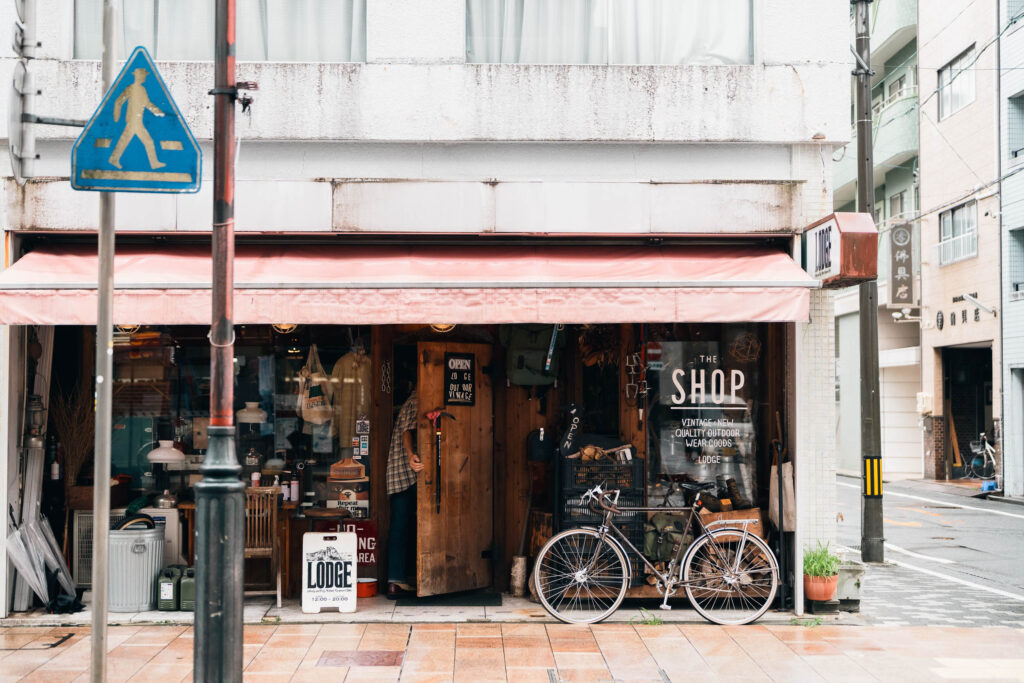
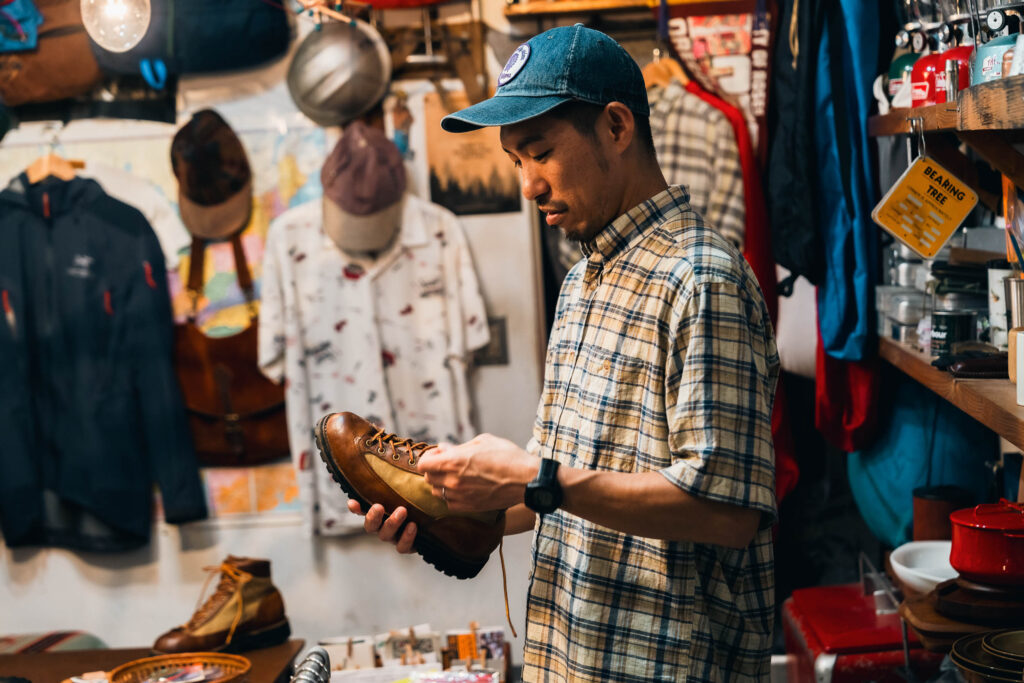
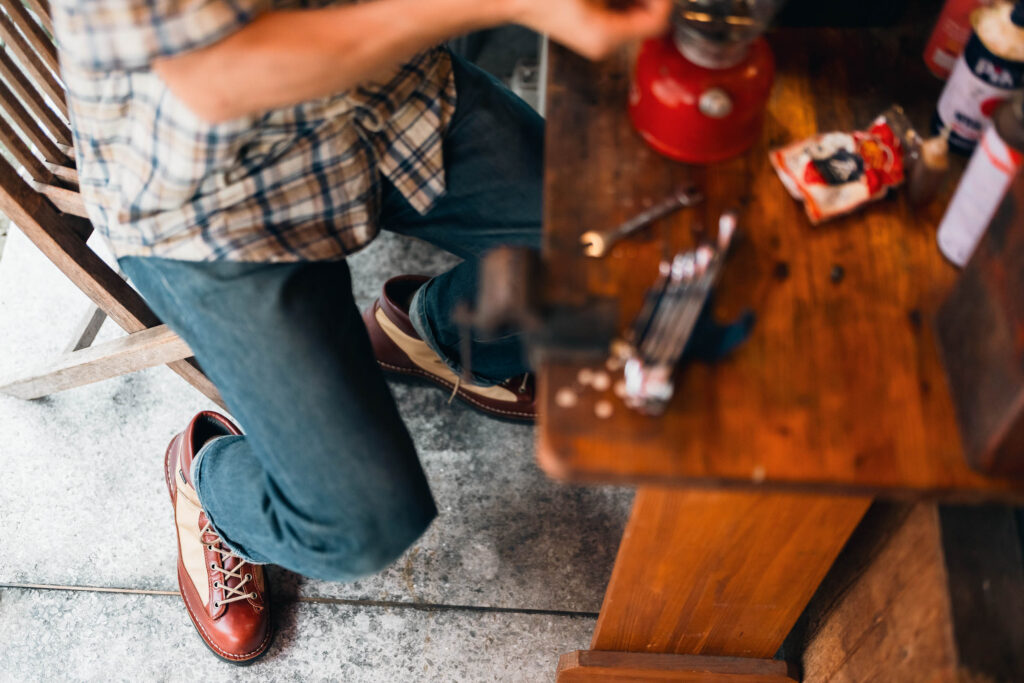
“I go to the U.S. to buy, feel, and select items that will adorn the shelves in my store. If I were to increase the size of the store or add more stores, I’d only end up losing track of what is on offer. Since LODGE is a small operation with only one store, I am able to present each and every item to my customers in my own words. I think that is the great thing about having small store” (Shogo-san)
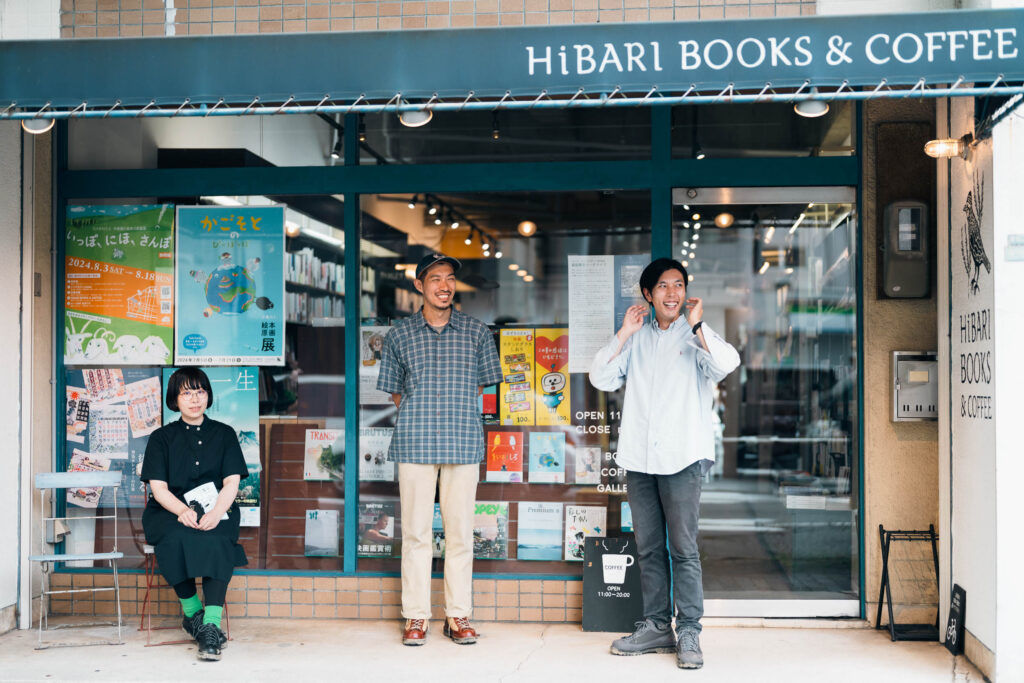
A town bustling with people and goods is full of connoisseurs?!
Why the good old stores endure
The building across from the EBONY coffee shop is also known as the “Creator Building” and houses an architectural and design office. In the design office is the PILOTIS store that sells folk art and antiques from around the world, and on the first floor is “Hibari Books,” where illustrator UMI works.
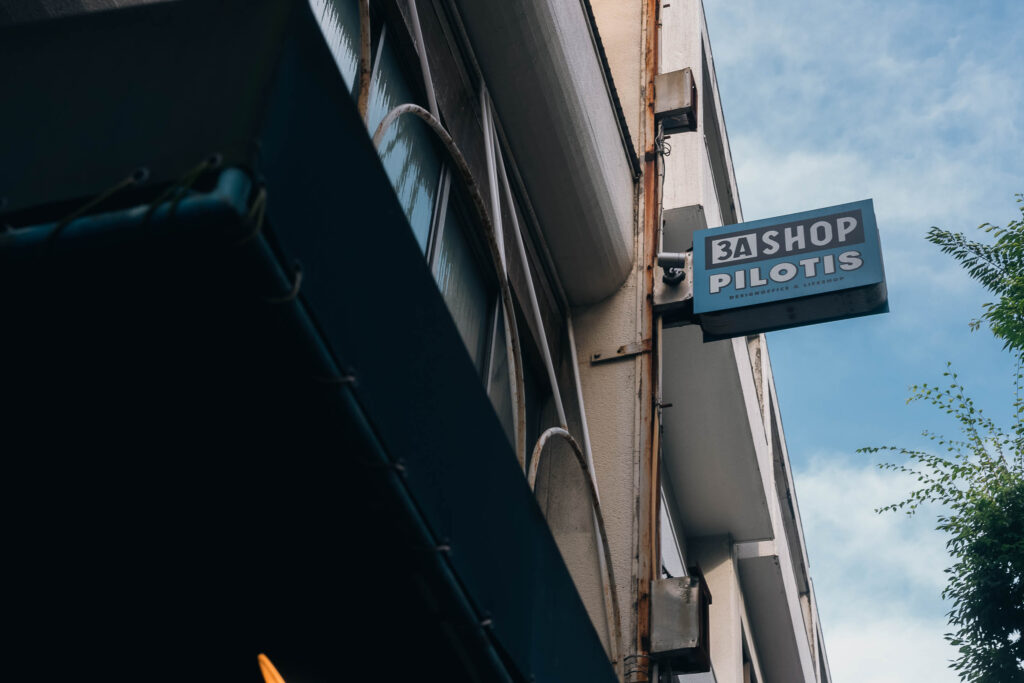
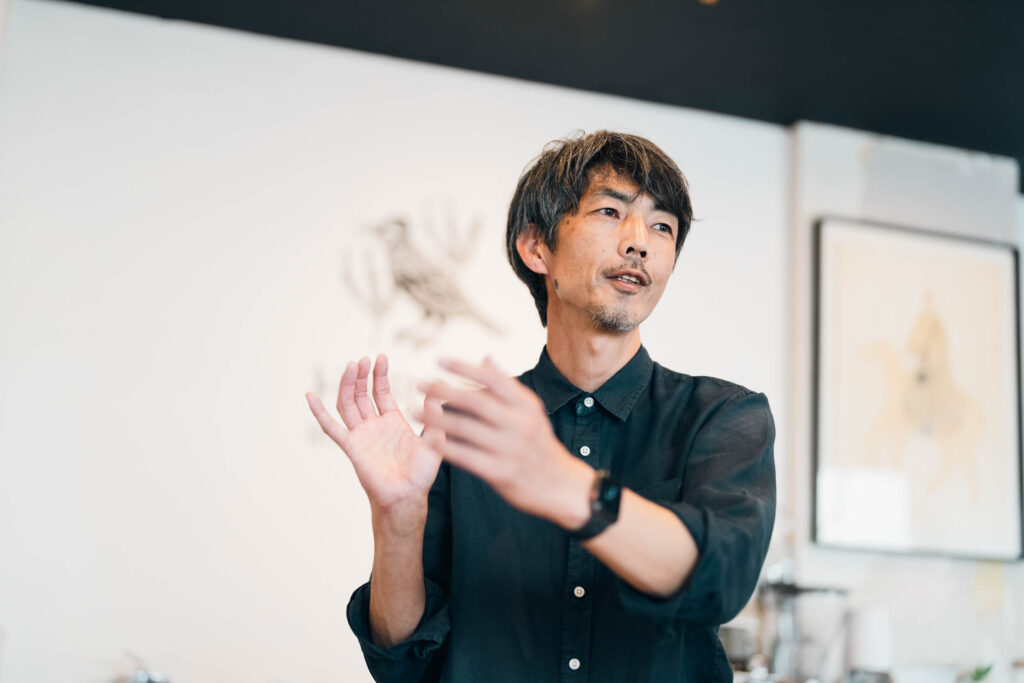

“Like “Hibari Books” where I work part-time, I feel that stores in outlying areas of the city reveal the personality of the owners. They are running stores with values that have nothing to do with fads and fashions, and I think that is what makes them so appealing. It wasn’t until I became an adult that I realized the charm of this city, but Shizuoka City still has many good, old-fashioned stores that are local institutions. However, when I was a student, I disliked it somewhat because it felt too sensitive to trends. I had the impression that stores that were popular in Tokyo were quickly opening and then shutting their doors one after another.” (umi-san)
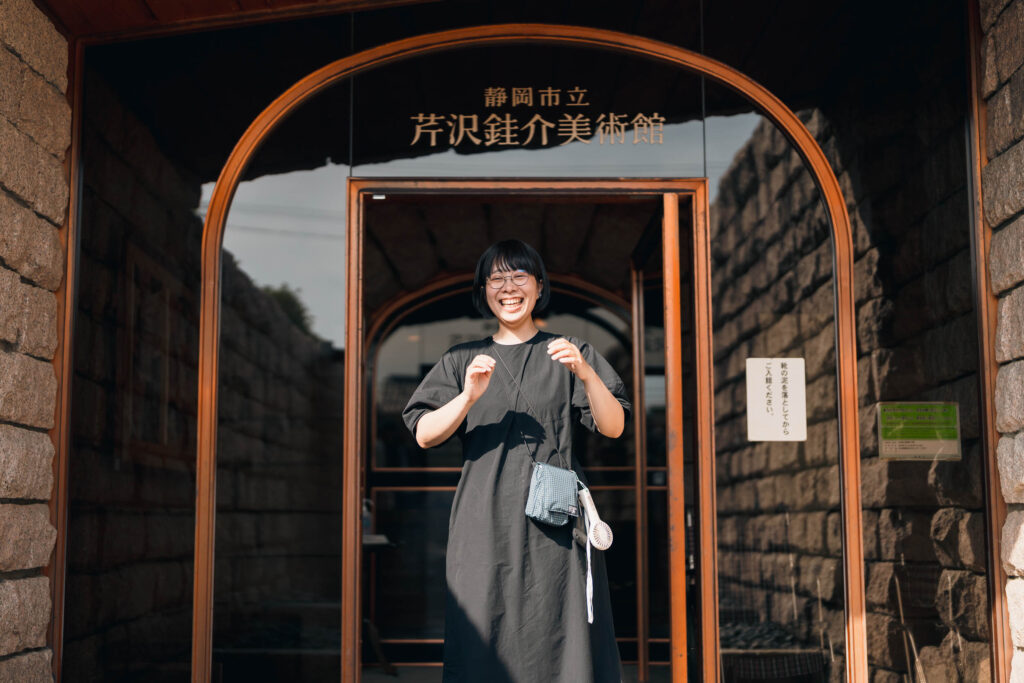
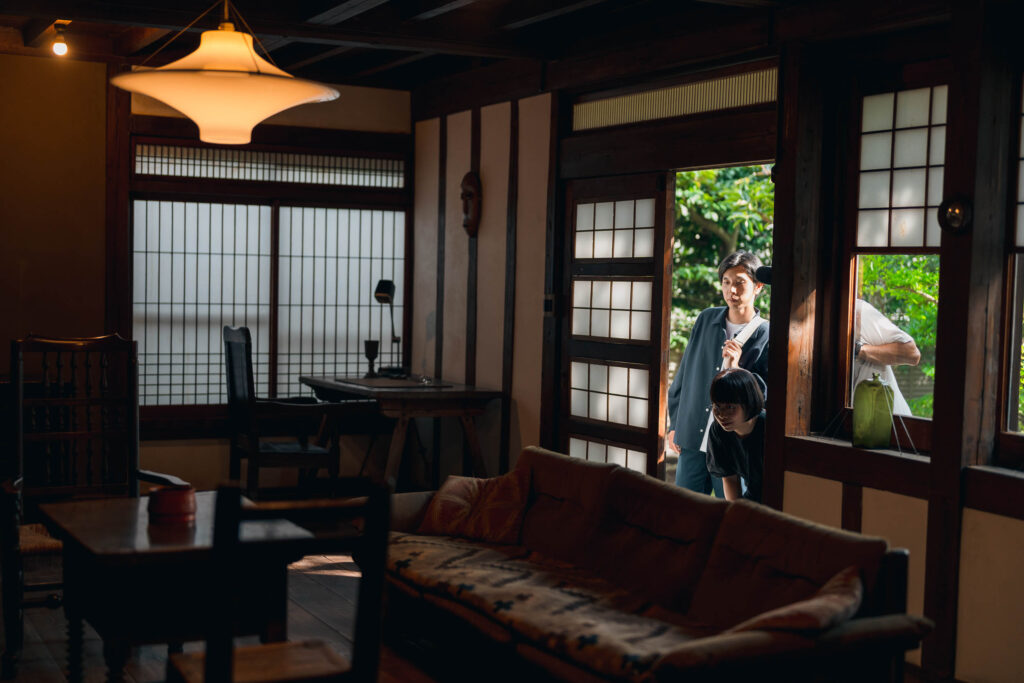
“An An,” a long-established and well-known pizza joint in town, “Shochiku,” a yakisoba noodle shop, and “Hamaya,” a teishoku (set meal) restaurant, are all long-time favorites among the locals. Even as the city swells and major commercial establishments flock to its streets, individual stores have not disappeared from the city. Uno-san, former owner of “OAK,” offered his unique perspective on Shizuoka’s city vibe:
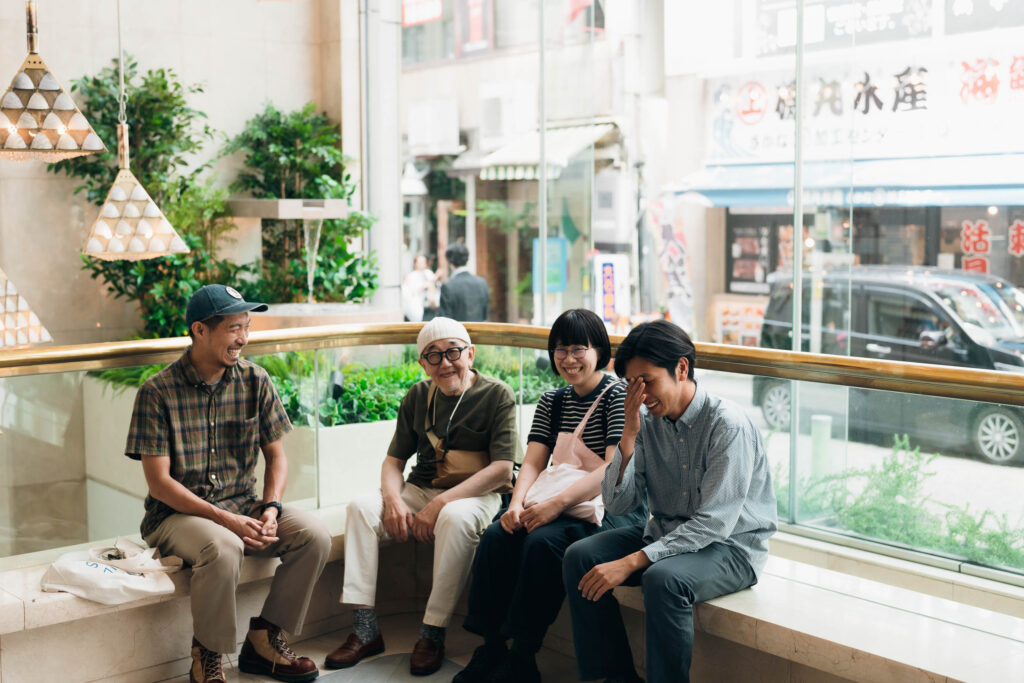
“Regarding the origin of the word “kudaranai” (meaning “trivial” in Japanese), it is said that the word “kudari-mono” dates back to the time when fine products were sent to Edo from Kamigata, the center of Japanese culture. The theory is that the word “kudaranai” was used to refer to bad products in contrast to the good products (kudarimono) consumed in Edo.
Shizuoka is a city at the confluence of all sorts of goods and products.
In other words, Shizuoka citizens have seen a lot of good things as well as trivial things. This in turn gave rise to many connoisseurs in this town. Yes, there may be an aspect of being a fashion-attuned place, but it is also scattered with good old individual stores.”
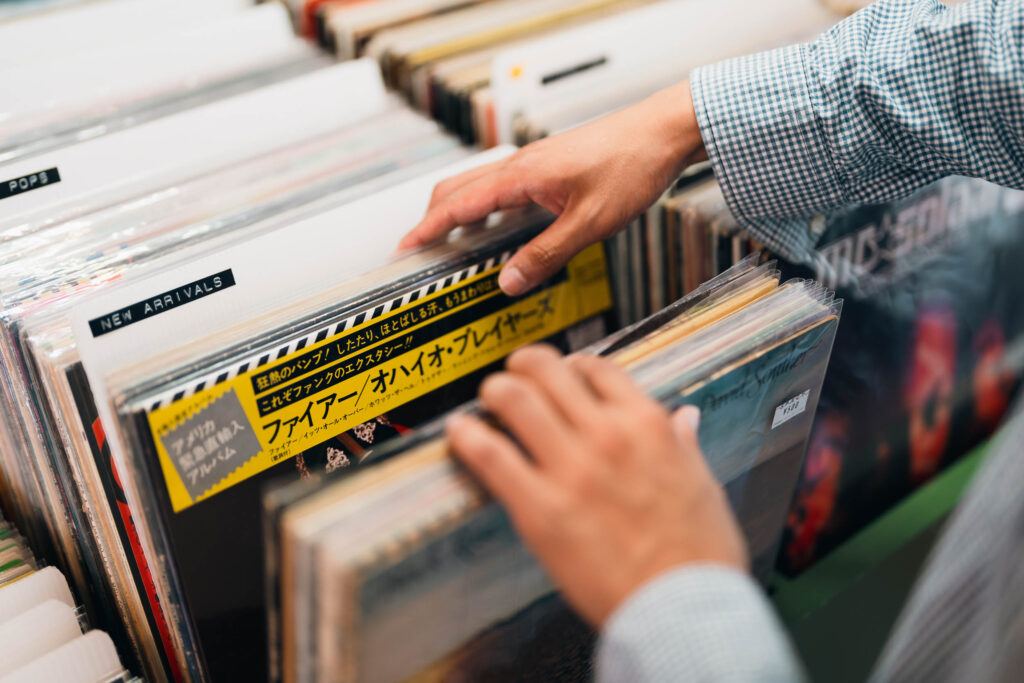
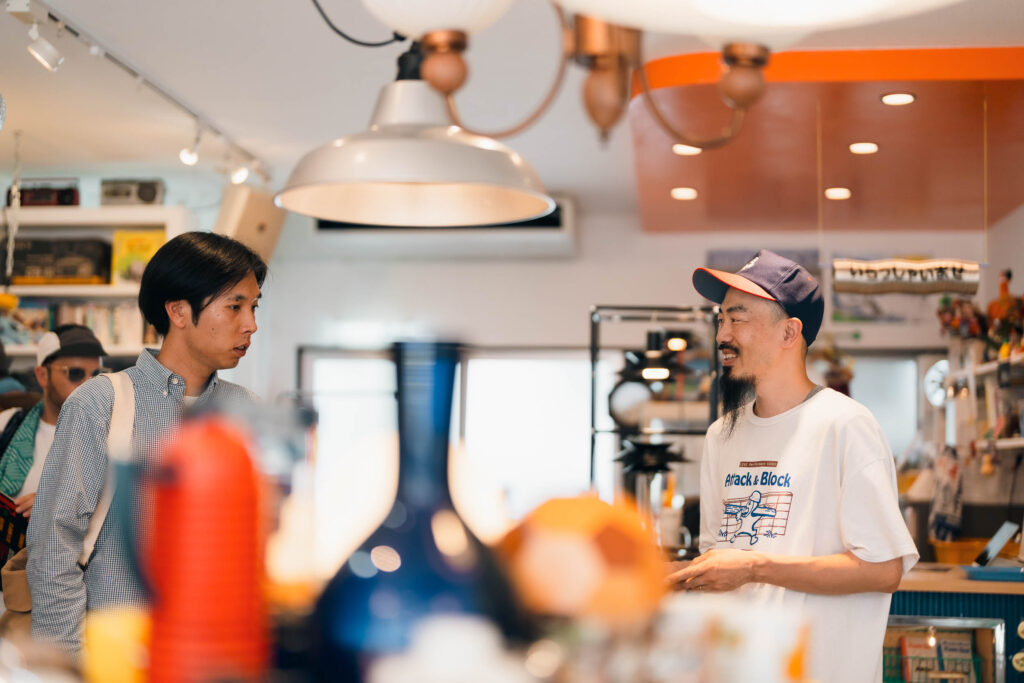
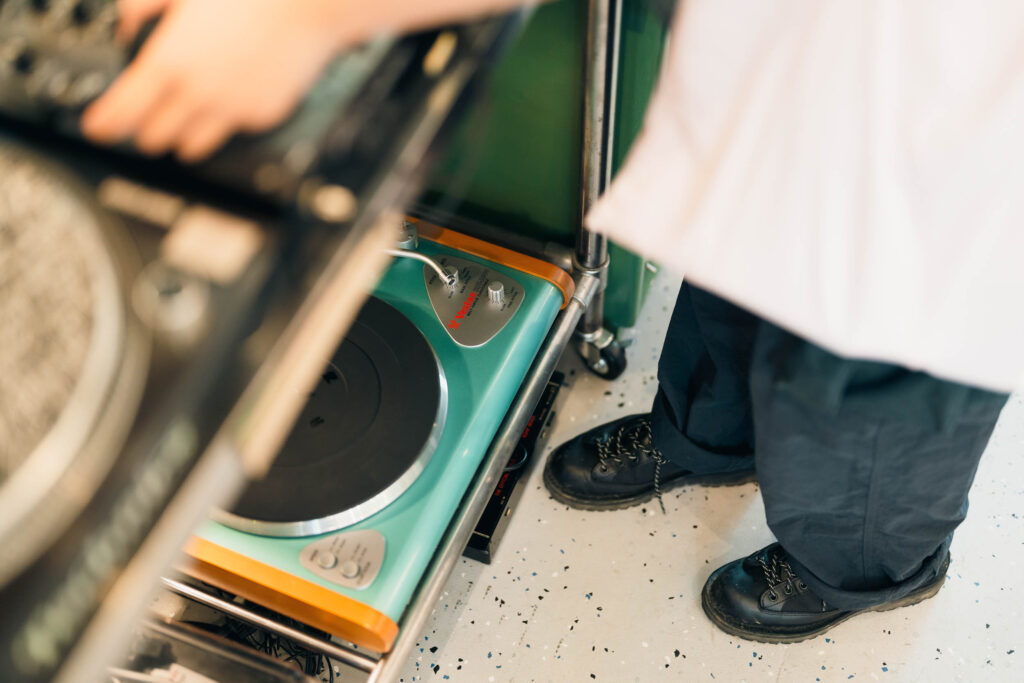
A district full of pleasant surprises
Currently, Umi is working part-time at “Hibari Books” and at a supermarket in the city while active as an illustrator. At the supermarket, her daily work involves processing fish in the fresh fish counter.
“I have never felt that my work had to be solely illustration, but rather that any experience I gain can be applied to my own activities. I’ll try my hand at anything. I applied for a part-time job at a supermarket because I wanted to be able to filet fish. The position offered did not include fish handling, but I made my case at the interview that I wanted to handle fish, and somehow I was given permission (laughs).”

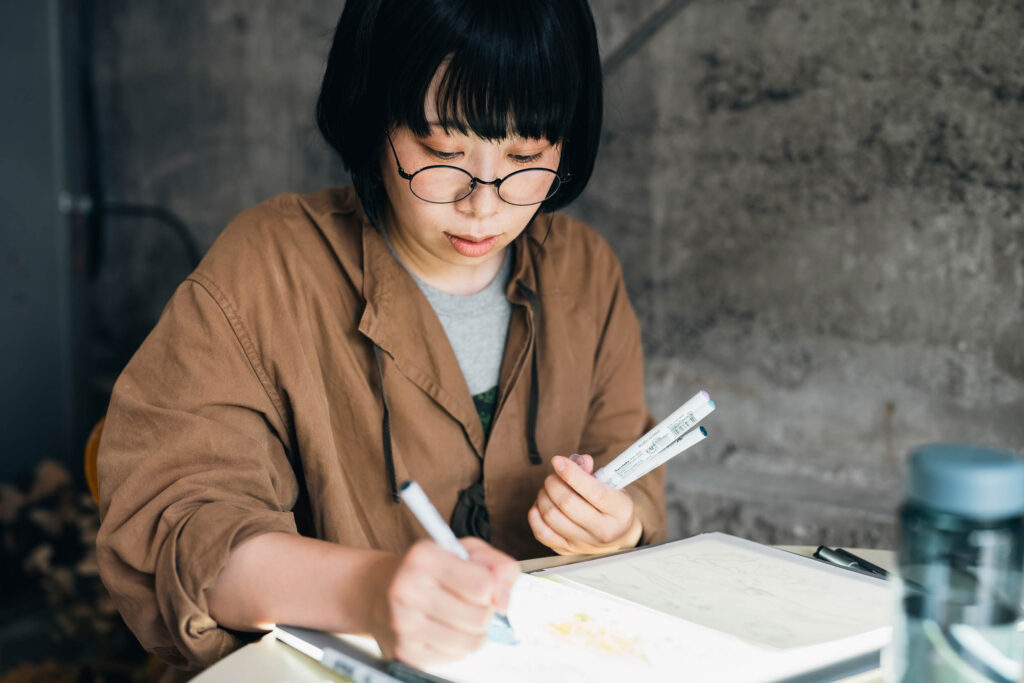
Originally from Shizuoka, Umi lived in Kyoto until a few years ago and worked in the office of contemporary artist Kohei Nawa before returning home. She began her career as an illustrator, and the one person who helped her get started and connected her with various people was Mr. Uno. Even after the closure of “OAK,” which functioned as a salon, Uno-san did not stop linking up kindred spirits.
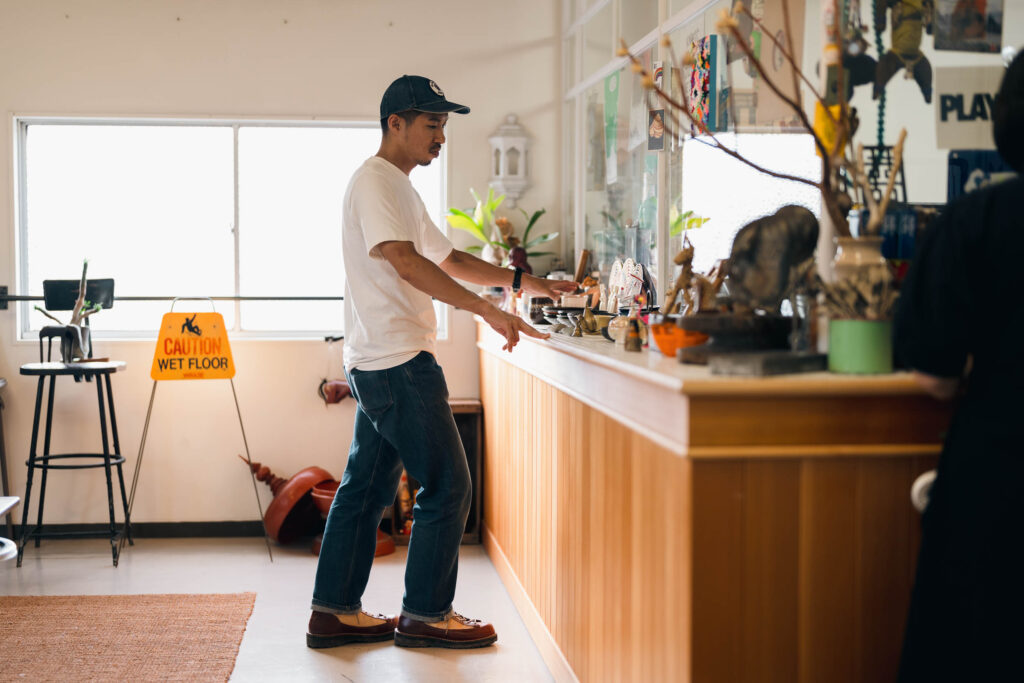
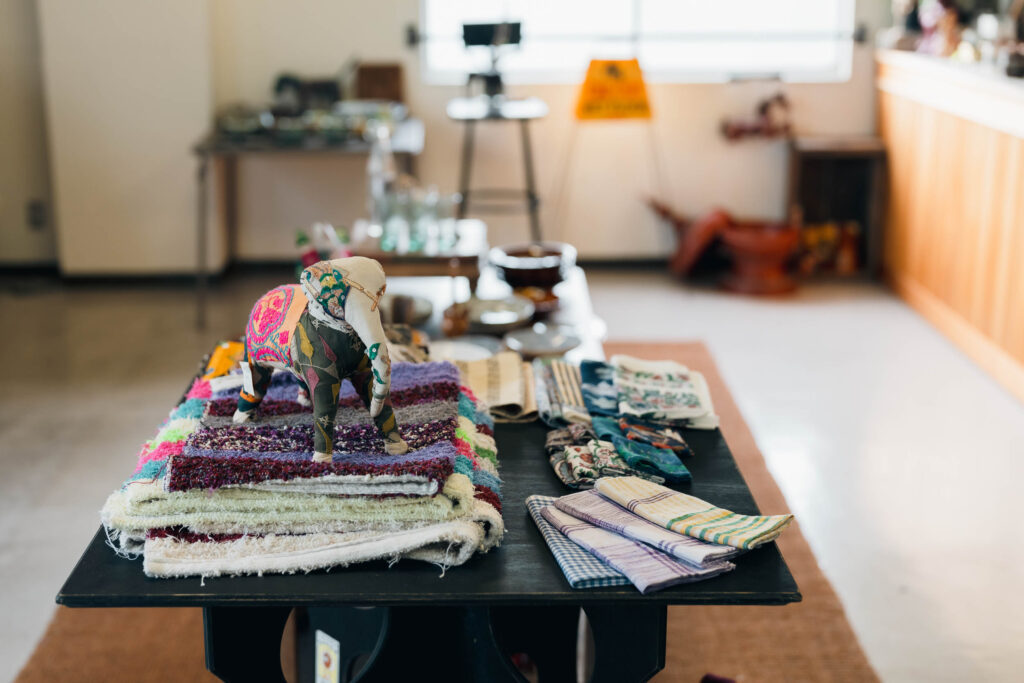

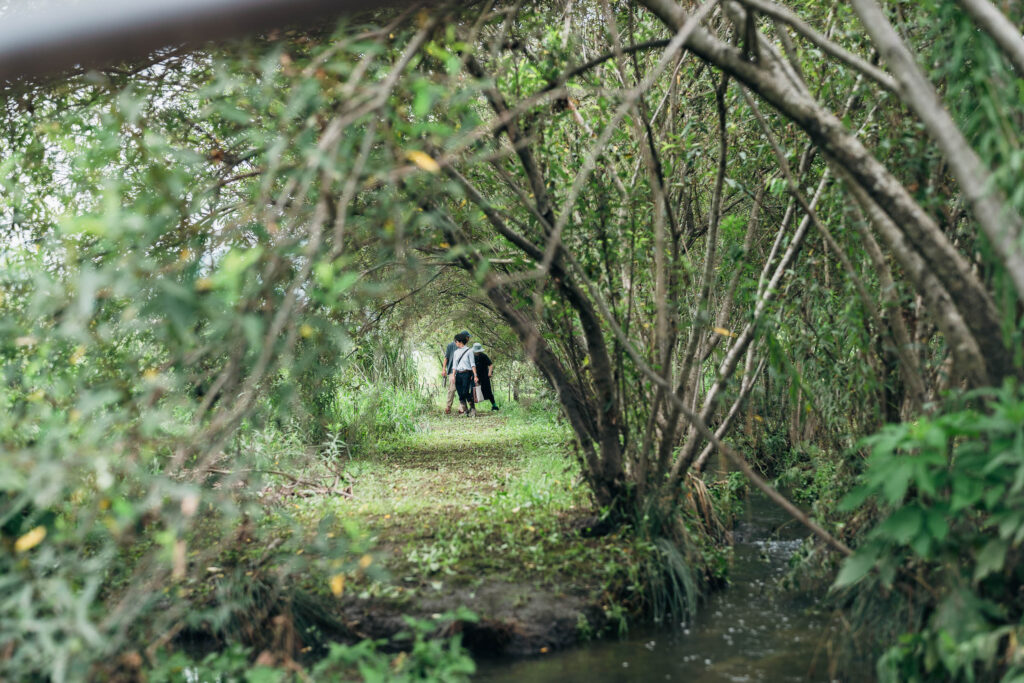
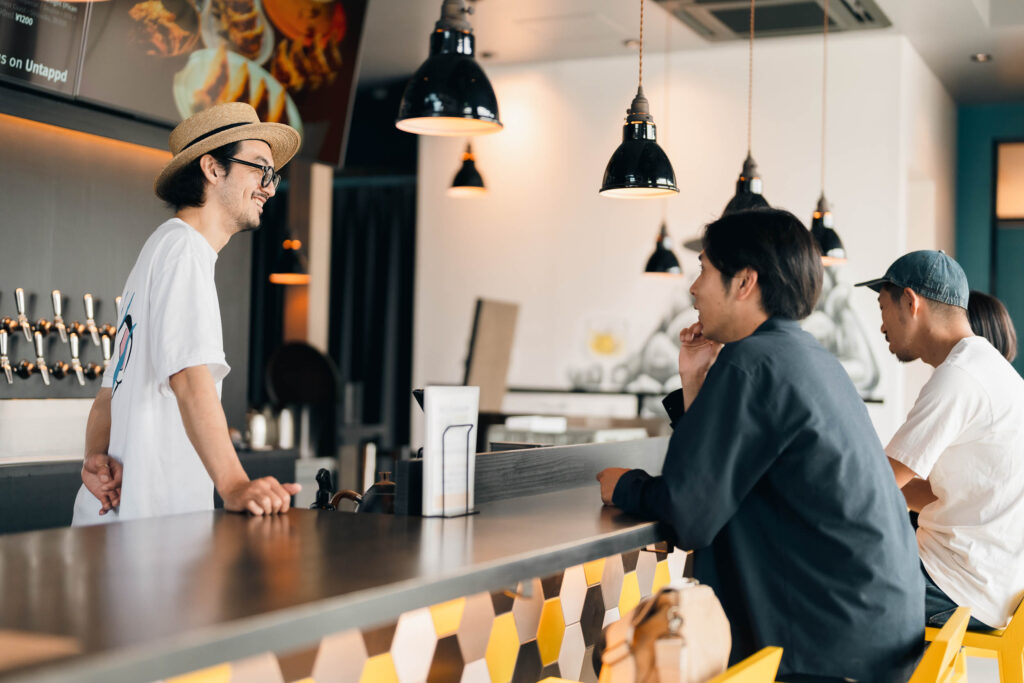
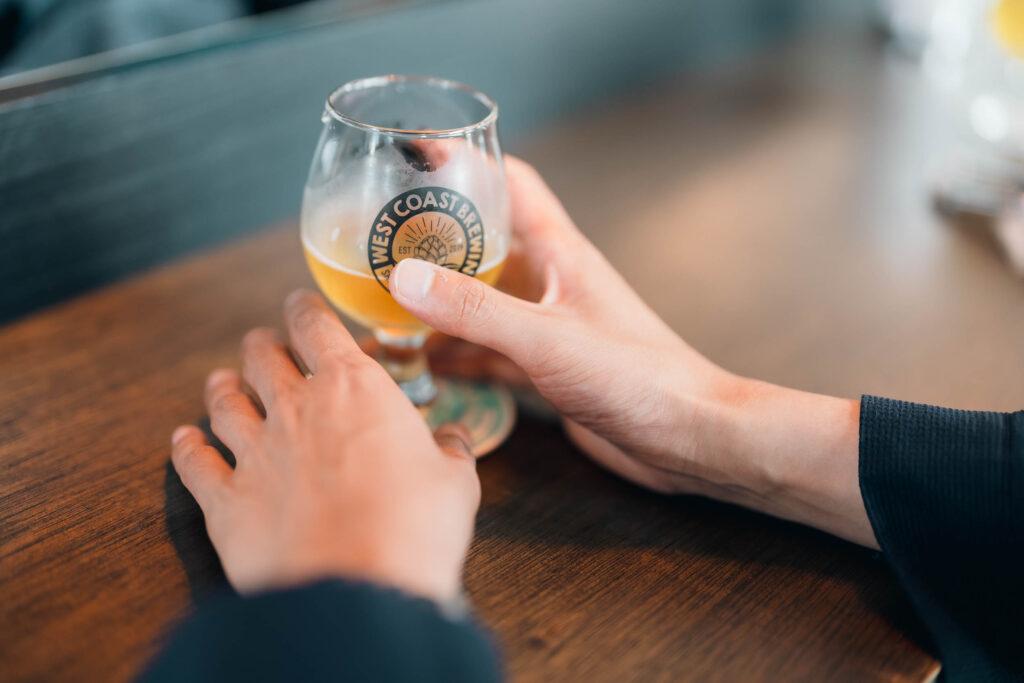
Another of Uno-san’s personal projects is to take it upon himself to create flyers for his favorite stores in Shizuoka City. He produces them at his own expense for stores he trusts and distributes them around town – all without being asked by anyone. In charge of illustrations is Umi-san. Shogo’s store “LODGE” is one of the select few stores featured in this self-imposed flyer project. Mitchy’s coffee mentor, the inspiration for UMI’s illustrator, and the catalyst for Shogo’s store “LODGE”, Uno-san is also the person who connects our three guides for this feature.
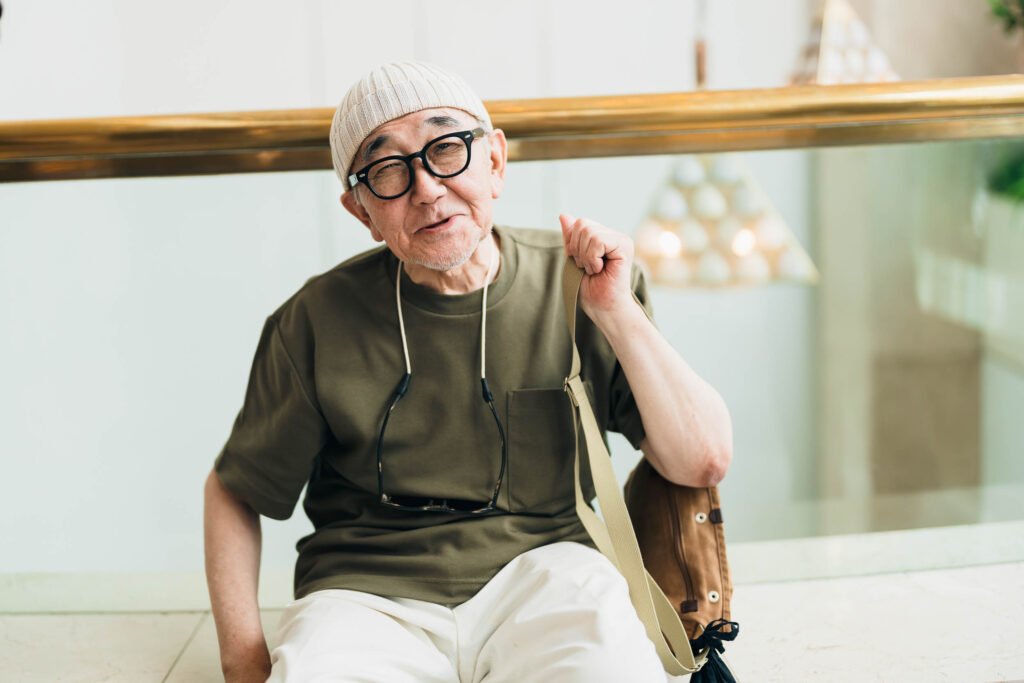
In one of the small flyers that he created, we found a sentence that speaks volumes about the stores we encountered on our trip.
“When I walk down the streets of a city, I am drawn to stores that have a tiny, sparkling personality. The kind of store that you pass in front of and you can’t help but look back and wonder if you saw something you hadn’t noticed before.”
Coming across something you never thought you’d see and turning around without a second thought. This is one of the best parts of strolling through a city, and even the best part of traveling. This is a sentence that expresses such a moment when a person is captivated by something.

The apparent uniformity and affluence of the city belies the distinctive individuality of the stores that can only be found here. It is this contrast that makes Shizuoka such an attractive city, and while oscillating between these two extremes of value, residents can discern in their daily lives what is worth consuming and what to leave behind for the next generation. Perhaps this is a trait that Shizuoka citizens have inherited from their predecessors.
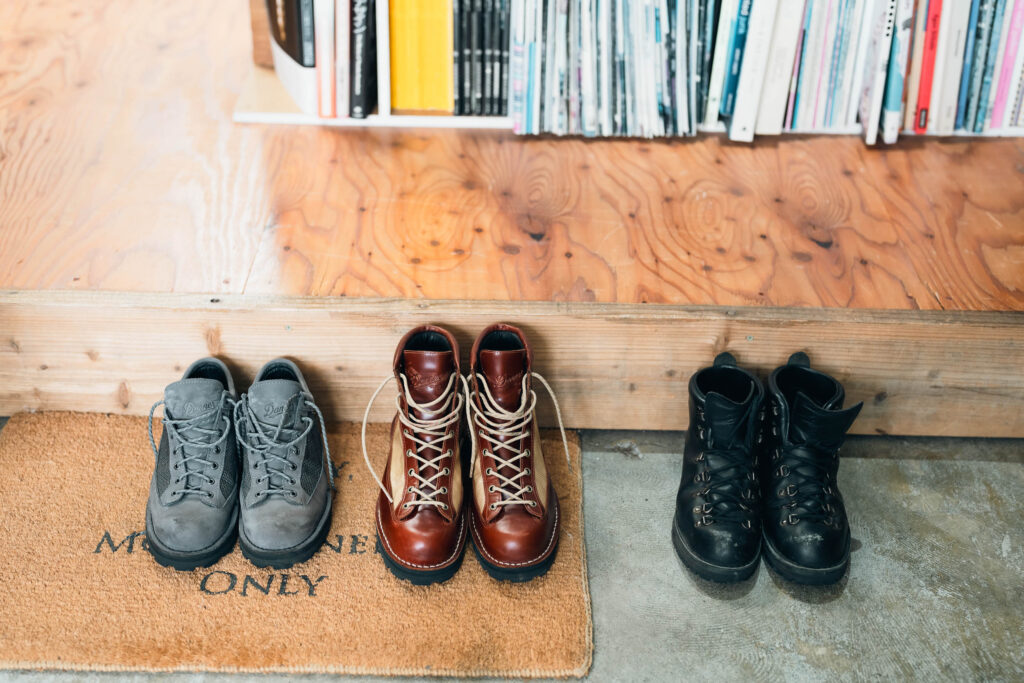
SHIZUOKA Guide
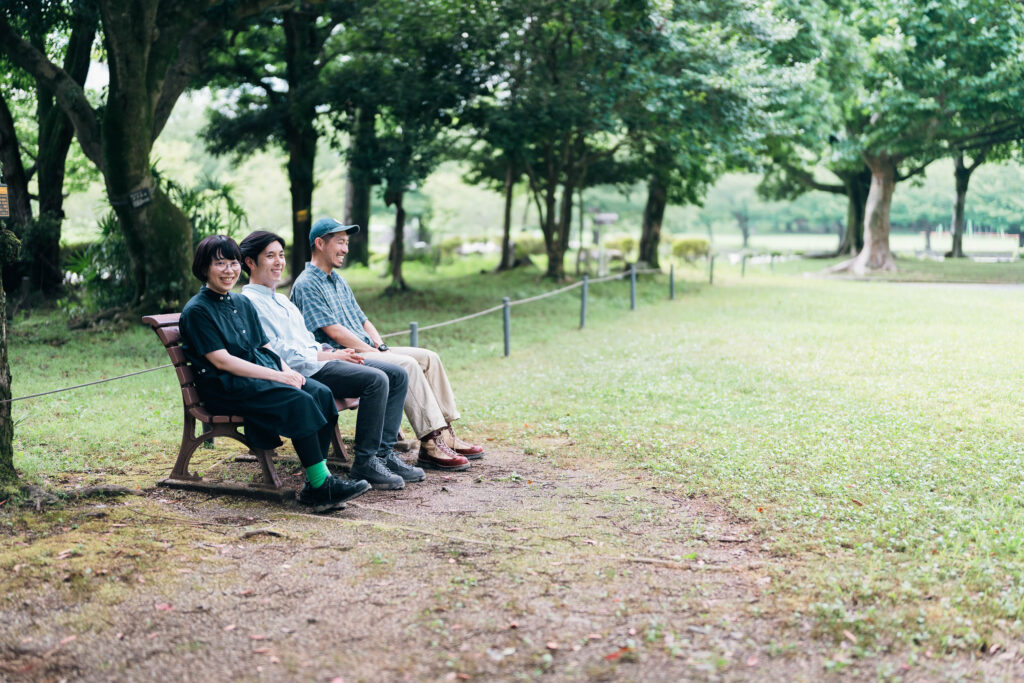
Mitchy (Middle)
Born in 1993 in Shizuoka City. After high school, he worked at jazz bars, cafes, and other restaurants before opening the coffee shop “ebony” in 2022 near Sunpu Castle Park.IG:@ebony.jp
Shogo Tsukiji (Right)
Born in Shizuoka City. After high school, he worked in an office for 7 years before opening LODGE in 2015.IG:@lodge_heavyduty
umi (Left)
Born in 1990 in Shizuoka City. After high school, she lived in Kyoto before returning home. Currently active as an illustrator while working at a bookstore and a supermarket.IG:@ o__u_m_i












